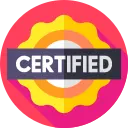FREE
daily Instructor: Dr. Stephen BoyerCourse Overview
Understanding the Fundamentals of Environmental Impact Assessment (EIA)
Defining Environmental Impact Assessment
- Understanding the core definition of EIA: A systematic process for identifying, predicting, evaluating, and mitigating the environmental effects of proposed projects, policies, plans, and programs before major decisions are taken and commitments made.
- Differentiating EIA from other environmental management tools, such as environmental audits, strategic environmental assessment (SEA), and life cycle assessment (LCA). Recognizing their distinct purposes and applications.
- Grasping the principles of sustainability and how EIA contributes to achieving environmental, social, and economic sustainability goals.
The EIA Process: A Step-by-Step Breakdown
- Screening: Determining whether a proposed project requires an EIA based on pre-defined criteria, such as project size, location, and potential environmental impacts. Understanding different screening methodologies (e.g., checklists, thresholds).
- Scoping: Identifying the key environmental issues and impacts that need to be addressed in the EIA. Defining the spatial and temporal boundaries of the assessment. Utilizing stakeholder consultation to inform the scoping process.
- Impact Prediction: Forecasting the magnitude, extent, and duration of potential environmental impacts using various scientific methods and models. Understanding the limitations and uncertainties associated with impact prediction.
- Impact Evaluation: Assessing the significance of predicted environmental impacts based on pre-determined criteria and values. Employing quantitative and qualitative methods for impact evaluation.
- Mitigation: Developing and implementing measures to avoid, reduce, or compensate for adverse environmental impacts. Understanding the hierarchy of mitigation (avoidance, minimization, rectification, reduction or elimination, compensation).
- Reporting: Preparing a comprehensive EIA report that documents the findings of the assessment, including the predicted impacts, proposed mitigation measures, and conclusions. Adhering to specific reporting guidelines and requirements.
- Review: Critically evaluating the EIA report to ensure that it is accurate, comprehensive, and addresses all relevant environmental issues. Understanding the role of independent review panels and public participation in the review process.
- Decision-Making: Using the findings of the EIA to inform decision-making about whether to approve a proposed project, and if so, under what conditions. Considering the environmental, social, and economic implications of the decision.
- Monitoring: Tracking the actual environmental impacts of a project after it has been implemented to verify the accuracy of impact predictions and the effectiveness of mitigation measures. Adapting management plans as needed based on monitoring results.
Mastering Impact Prediction and Evaluation Techniques
Air Quality Modeling
- Understanding the principles of air dispersion modeling and its application in predicting air pollutant concentrations from industrial sources.
- Using specific models (e.g., AERMOD, CALPUFF) to predict impacts from emissions, considering meteorological conditions and terrain features.
- Interpreting model output and assessing the significance of predicted air quality impacts, comparing predicted concentrations to ambient air quality standards.
- Accounting for secondary pollutant formation (e.g., ozone) in air quality impact assessments.
Noise Impact Assessment
- Applying principles of acoustics to predict noise levels from various sources, such as traffic, construction, and industrial equipment.
- Using noise modeling software (e.g., SoundPLAN, CadnaA) to simulate noise propagation and assess impacts on sensitive receptors (e.g., residential areas, schools, hospitals).
- Evaluating noise impacts based on relevant noise standards and guidelines, considering factors such as frequency weighting and duration.
- Developing noise mitigation measures, such as noise barriers, sound insulation, and operational controls.
Water Quality Modeling
- Understanding the principles of water quality modeling and its application in predicting the impacts of wastewater discharges on surface water and groundwater.
- Using models (e.g., QUAL2K, WASP) to simulate pollutant transport and fate in rivers, lakes, and estuaries.
- Assessing the impacts of nutrient enrichment, sedimentation, and toxic pollutants on aquatic ecosystems.
- Developing water quality management strategies to protect and improve water quality.
Ecological Impact Assessment
- Identifying and assessing the potential impacts of projects on terrestrial and aquatic ecosystems, including habitats, species, and ecological processes.
- Conducting habitat assessments and species surveys to establish baseline ecological conditions.
- Applying ecological models to predict the impacts of habitat loss, fragmentation, and disturbance on biodiversity.
- Developing mitigation measures to protect and restore ecological values, such as habitat restoration, species translocation, and ecological offsets.
Social Impact Assessment
- Understanding the principles of social impact assessment (SIA) and its application in predicting and evaluating the social consequences of projects.
- Identifying stakeholders and engaging them in the SIA process through consultation and participation.
- Assessing the impacts of projects on community well-being, cultural heritage, livelihoods, and social equity.
- Developing mitigation measures to address negative social impacts and enhance positive social outcomes.
Applying EIA in Different Contexts and Sectors
EIA in the Energy Sector
- Applying EIA principles to assess the environmental impacts of power generation projects, including renewable energy (e.g., wind, solar, hydro) and fossil fuel-based power plants.
- Evaluating the impacts of energy transmission and distribution infrastructure, such as power lines and pipelines.
- Addressing specific environmental issues associated with energy development, such as air pollution, water use, greenhouse gas emissions, and land disturbance.
EIA in the Transportation Sector
- Applying EIA principles to assess the environmental impacts of transportation projects, including highways, railways, airports, and ports.
- Evaluating the impacts of transportation projects on air quality, noise levels, water resources, and ecosystems.
- Addressing specific environmental issues associated with transportation, such as traffic congestion, vehicle emissions, and habitat fragmentation.
EIA in the Mining Sector
- Applying EIA principles to assess the environmental impacts of mining projects, including exploration, extraction, processing, and closure.
- Evaluating the impacts of mining on water quality, air quality, soil, and biodiversity.
- Addressing specific environmental issues associated with mining, such as acid mine drainage, heavy metal contamination, and land degradation.
- Understanding the principles of mine closure and rehabilitation and incorporating them into the EIA process.
EIA in Infrastructure Development
- Applying EIA principles to assess the environmental impacts of large-scale infrastructure projects, such as dams, roads, and urban development.
- Evaluating the impacts on water resources, land use, air quality, and social structures.
- Addressing resettlement issues and considering alternative design options.
EIA and Climate Change
- Integrating climate change considerations into the EIA process, including assessing the greenhouse gas emissions associated with projects and evaluating their vulnerability to climate change impacts.
- Applying climate change adaptation measures to reduce the vulnerability of projects to climate change risks.
- Evaluating the potential of projects to contribute to climate change mitigation through the use of renewable energy and energy efficiency measures.
Navigating Legal and Regulatory Frameworks
International EIA Frameworks
- Understanding international conventions and agreements related to EIA, such as the Espoo Convention on Environmental Impact Assessment in a Transboundary Context.
- Applying international best practices in EIA, as promoted by organizations such as the World Bank, the International Finance Corporation (IFC), and the United Nations Environment Programme (UNEP).
National EIA Regulations
- Analyzing national EIA regulations and guidelines, including requirements for screening, scoping, impact assessment, mitigation, and monitoring.
- Understanding the roles and responsibilities of different government agencies in the EIA process.
- Ensuring compliance with national EIA regulations and guidelines.
Public Participation and Stakeholder Engagement
- Understanding the importance of public participation and stakeholder engagement in the EIA process.
- Developing and implementing effective public participation strategies, including consultation, information disclosure, and grievance mechanisms.
- Addressing stakeholder concerns and incorporating them into the EIA process.
FlashCards
External Resources
Add-On Features
Expert Instructor
Get live study sessions from experts
Honorary Certification
Receive a certificate before completing the course.
Currency
Sign in to change your currency
I'm not ready to enroll?
Tell us why, because it matters.
Enroll With a Key
Course Benefits
Get a Job
Use your certificate to stand out and secure new job opportunities.
Earn More
Prove your skills to secure promotions and strengthen your case for higher pay
Learn a Skill
Build knowledge that stays with you and works in real life.
Lead Teams
Use your certificate to earn leadership roles and invitations to industry events.
Visa Support
Use your certificate as proof of skills to support work visa and immigration applications.
Work on Big Projects
Use your certificate to qualify for government projects, enterprise contracts, and tenders requiring formal credentials.
Win Partnerships
Use your certified expertise to attract investors, get grants, and form partnerships.
Join Networks
Use your certificate to qualify for professional associations, advisory boards, and consulting opportunities.
Stand Out Professionally
Share your certificate on LinkedIn, add it to your CV, portfolio, job applications, or professional documents.
Discussion Forum
Join the discussion!
No comments yet. Sign in to share your thoughts and connect with fellow learners.
Frequently Asked Questions
For detailed information about our Environmental Impact Assessment (EIA) course, including what you’ll learn and course objectives, please visit the "About This Course" section on this page.
The course is online, but you can select Networking Events at enrollment to meet people in person. This feature may not always be available.
We don’t have a physical office because the course is fully online. However, we partner with training providers worldwide to offer in-person sessions. You can arrange this by contacting us first and selecting features like Networking Events or Expert Instructors when enrolling.
Contact us to arrange one.
This course is accredited by Govur University, and we also offer accreditation to organizations and businesses through Govur Accreditation. For more information, visit our Accreditation Page.
Dr. Stephen Boyer is the official representative for the Environmental Impact Assessment (EIA) course and is responsible for reviewing and scoring exam submissions. If you'd like guidance from a live instructor, you can select that option during enrollment.
The course doesn't have a fixed duration. It has 26 questions, and each question takes about 5 to 30 minutes to answer. You’ll receive your certificate once you’ve successfully answered most of the questions. Learn more here.
The course is always available, so you can start at any time that works for you!
We partner with various organizations to curate and select the best networking events, webinars, and instructor Q&A sessions throughout the year. You’ll receive more information about these opportunities when you enroll. This feature may not always be available.
You will receive a Certificate of Excellence when you score 75% or higher in the course, showing that you have learned about the course.
An Honorary Certificate allows you to receive a Certificate of Commitment right after enrolling, even if you haven’t finished the course. It’s ideal for busy professionals who need certification quickly but plan to complete the course later.
The price is based on your enrollment duration and selected features. Discounts increase with more days and features. You can also choose from plans for bundled options.
Choose a duration that fits your schedule. You can enroll for up to 180 days at a time.
No, you won't. Once you earn your certificate, you retain access to it and the completed exercises for life, even after your subscription expires. However, to take new exercises, you'll need to re-enroll if your subscription has run out.
To verify a certificate, visit the Verify Certificate page on our website and enter the 12-digit certificate ID. You can then confirm the authenticity of the certificate and review details such as the enrollment date, completed exercises, and their corresponding levels and scores.
Can't find answers to your questions?
Certification Guide

Complete the Course
Begin the course by selecting your experience level in the course content section:
Beginner: Master the material with interactive questions and enough time.
Intermediate: Get certified faster with hints and balanced questions.
Advanced: Challenge yourself with more questions and less time

Earn Your Certificate
To download and share your certificate, you must achieve a combined score of at least 75% on all questions answered.





